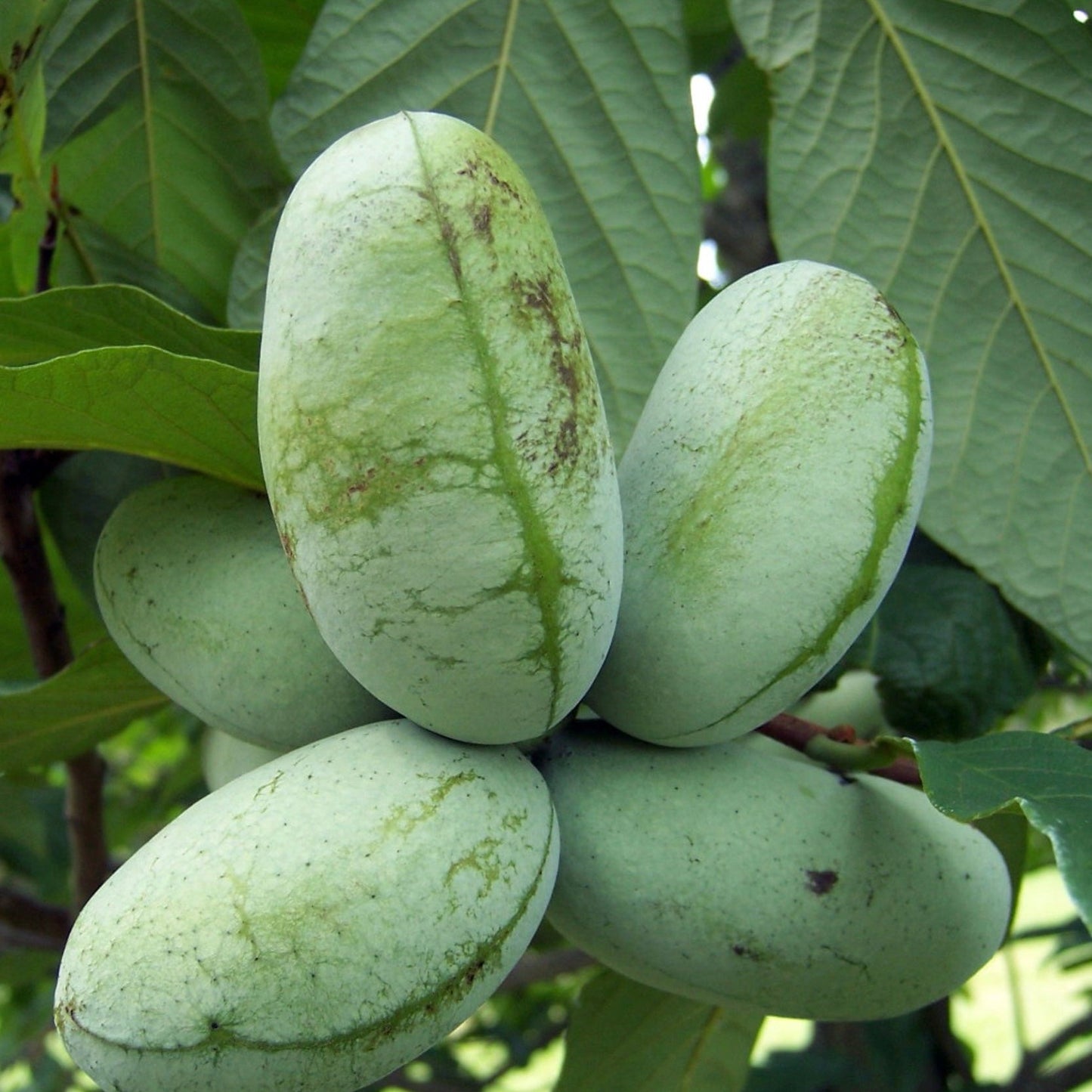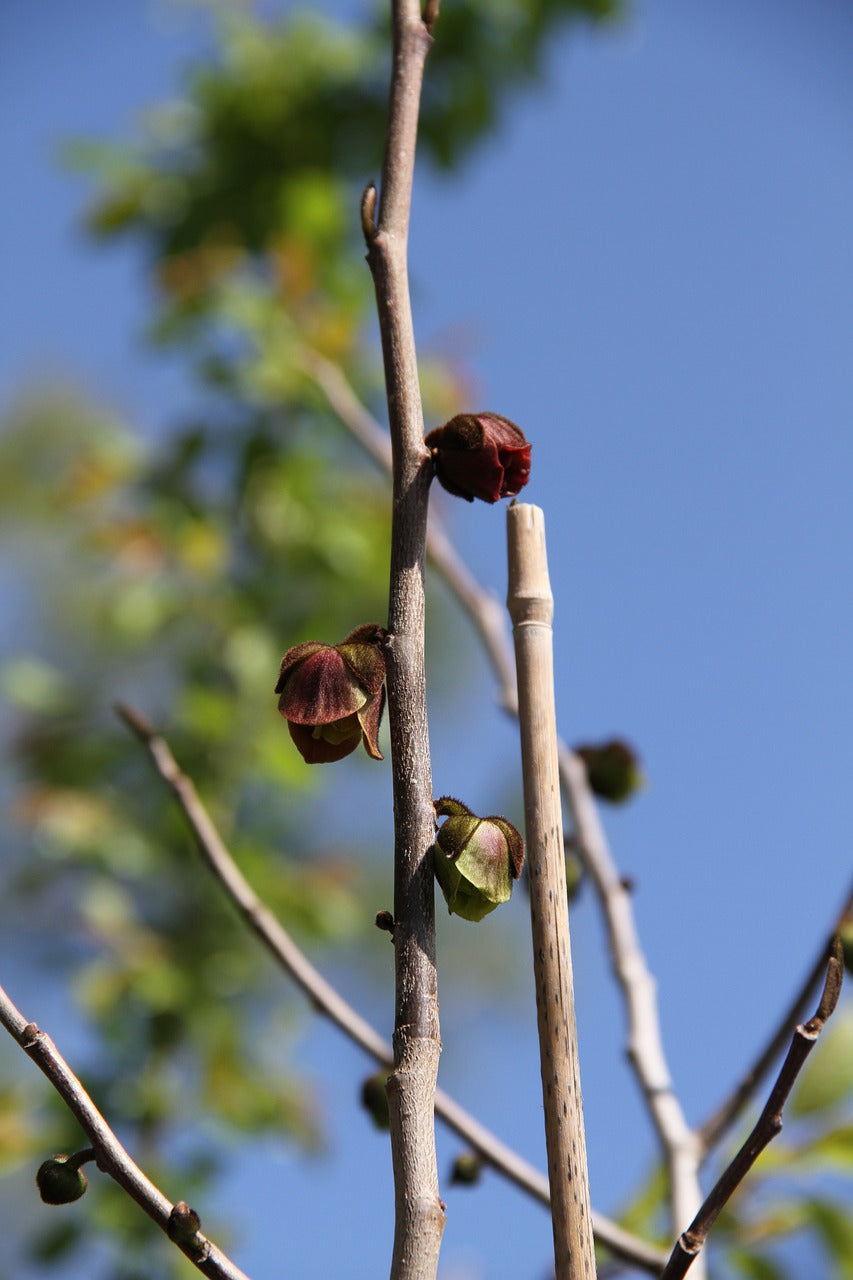The American Fig Company
Pawpaw Tree
Pawpaw Tree
Couldn't load pickup availability
The Pawpaw tree, Asimina triloba, known for its unique, tropical-flavored fruit within a temperate climate, is increasingly sought after by gardeners and fruit enthusiasts. Seedling trees, in particular, offer a range of benefits that make them an attractive option for those looking to cultivate this native North American species.
Latin Name: Asimina triloba
Site and Soil: Pawpaw trees thrive in full sun to partial shade, preferring rich, well-drained, slightly acidic to neutral soil (pH 5.5 to 7.0). They are adaptable to various soil types but perform best in deep, fertile soils that retain moisture without waterlogging.
Pollination Requirements: Pawpaws are not self-pollinating, and having two or more trees can significantly increase the chances of cross-pollination and fruit set. Seedling trees, being genetically diverse, can enhance this cross-pollination potential.
Hardiness: These trees are hardy in USDA zones 5 through 9, demonstrating resilience against cold winters and adaptability to a wide range of temperate climates.
Bearing Age: Seedling Pawpaw trees can take a bit longer to bear fruit compared to grafted varieties, typically starting to produce fruit 5-7 years after planting. This longer maturation period allows the trees to establish a strong root system and canopy, which contributes to the health and longevity of the tree.
Size at Maturity: Pawpaw trees can reach heights of 15-20 feet and a spread of 15 feet, forming a rounded, pyramidal shape that provides aesthetic value to the landscape.
Bloom Time: In spring, Pawpaw trees produce unique, purplish-brown flowers that not only add ornamental interest but also attract pollinators. These flowers develop into large, greenish fruits by late summer to early fall.
Ripening Time: Fruits typically ripen from late summer to early fall, depending on the climate and weather conditions of the year.
Yield: While yield can vary, a mature Pawpaw tree can produce 25-30 pounds of fruit annually, with seedling trees potentially offering a range of fruit flavors and sizes due to their genetic diversity.
Pests & Diseases: Pawpaw trees are remarkably resistant to pests and diseases, making them an excellent choice for organic or low-maintenance gardens.
USDA Zone: 5-9. This range highlights the Pawpaw tree's versatility and ability to thrive in a variety of environmental conditions.
Choosing seedling Pawpaw trees offers several advantages, including the potential for discovering unique fruit flavors and characteristics due to their genetic diversity. This variability can be especially appealing to enthusiasts looking to experiment with different tastes and to contribute to the biodiversity of their gardens. Additionally, seedling trees tend to be more robust and adaptable to local conditions over time. For those seeking to explore the joys of growing this exotic-tasting fruit in a temperate zone, seedling Pawpaw trees represent an exciting and rewarding gardening venture.
Share


Featured Review
"Great! Great! Great! Great! Great!"
✰✰✰✰✰
- JARREN -

